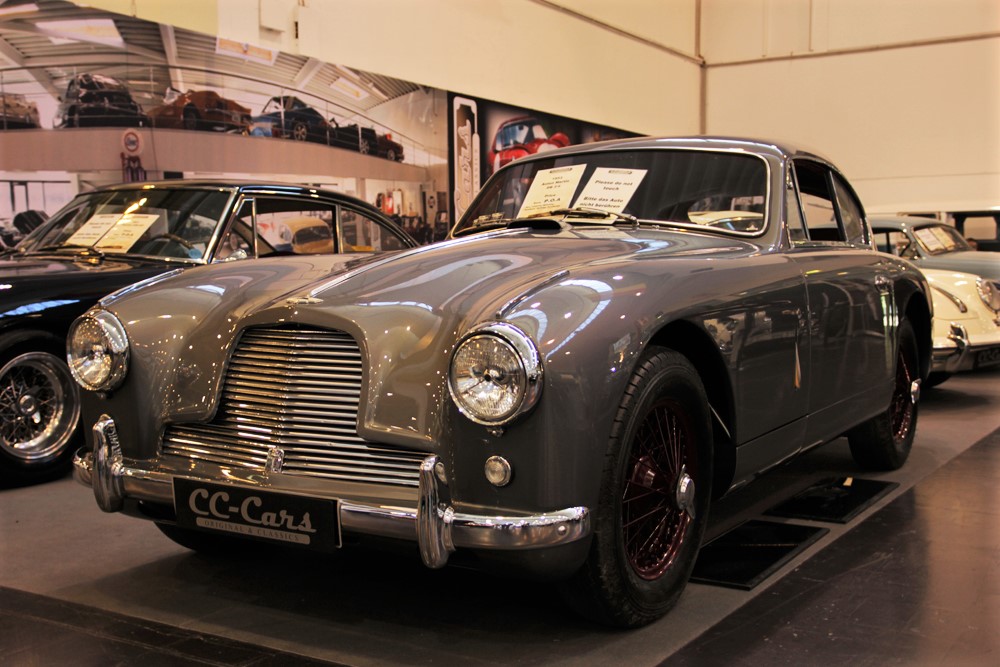-
Insurance
InsuranceAbout our productsLearn about insuringGet a quote Get current values, historical values, model history and more.
-
Valuation
ValuationHagerty valuation toolLook up a vehicle value Get current values, historical values, model history and more.
-
Events
EventsHagerty official eventsHagerty ClubhouseEvent calendar
-
Entertainment
EntertainmentMore to explore
- Portal login
1953 Aston Martin DB2/4
Mk I 2.5L DHC 2.6 L
Vehicle values by condition
Fair
Condition 4
£158,000
#4 cars are daily drivers, with flaws visible to the naked eye. The chrome might have pitting or scratches, the windshield might be chipped.
Good
Condition 3
£205,000
#3 cars could possess some, but not all of the issues of a #4 car, but they will be balanced by other factors such as a fresh paint job or a new, correct interior.
Excellent
Condition 2
£279,000
#2 cars could win a local or regional show. They can be former #1 cars that have been driven or have aged. Seasoned observers will have to look closely for flaws.
Concours
Condition 1
£330,000
#1 vehicles are the best in the world. The visual image is of the best car, unmodified, in the right colours, driving onto the lawn at the finest concours.
Insurance premium for a
1953 Aston Martin DB2/4 Mk I 2.5L DHC 2580
valued at £205,000
£778.57
/ year*
History of the 1953 - 1954 Aston Martin DB2/4

1953 - 1954 Aston Martin DB2/4
In May 1953 David Brown introduced the Aston Martin DB2/4 grand tourer, replacing the DB2 on which it was based. It offered 2+2 seating, a slightly higher roofline than its predecessor and a hatchback. It was sold as a drop-head coupe (DHC), sports saloon (2+2 hatchback) and a 2 seat fixed-head coupe (FHC) , with bodies built by H.J. Mulliner, although a tiny number of convertible Spiders were manufactured by Touring and Bertone. The DB2/4 employed a front engine, rear wheel drive layout and was sold as a sports grand tourer.
The DB2/4 retained the DB2 Vantage specification 2580cc, 6-cylinder, twin-cam engine designed by W.O. Bentley, producing 125 bhp, gave a 0-60 mph time of 10.8 seconds and a top speed of 125 mph. A radio was optional. DB 2-4 sales totalled 565 between October 1953 and October 1955, with 73 being drop-head coupes and 4 or 5 Bertone-bodied Spiders.
David Brown introduced the Aston Martin DB 2/4 Mk II in October 1955. Visually similar to the preceding DB 2/4, the Mk II had an air scoop ahead of the curved windshield and side air vents to help ventilation. It was fitted with indicators instead of trafficators, a continental-style fingertip headlight flasher, and the rear wings were squared off. Construction remained in the superleggera style, with aluminium panels over a tubular frame. Under the bonnet, the engine was bored out to 2922cc, generating 140 bhp, a 0-60 mph time of 11 seconds and a top speed of 120 mph. Tickford offered a drop head coupe, and built a notchback coupe, which had a conventional bonnet and wings, instead of the tilt-forward nose of the saloon. In all, 199 Mk II saloons were built, 34 of the Tickford coupes and 24 drop-head coupes, plus 3 Touring Spiders.
The Aston Martin DB 2/4 Mk III (more often called the DB Mark III) was introduced in 1957. It was the last variant of Claude Hill’s Atom chassis, and Frank Feeley’s revolutionary 2+2 hatchback, and was the final body to be built by Tickford factory. With a stiffer block, stronger camshafts and bigger valves, the 3-liter DBA engine was the ultimate version of W.O. Bentley’s last engine.
The DB Mk III was also the first Aston Martin to feature the trademark grille, with its sculpted corners, and mirrored the shape in the dashboard, moving the instruments in front of the driver. It was also the first Aston Martin road car to offer disc brakes on the front wheels. 551 were built between March 1957 and July 1959.
In recent years Aston Martin DB 2/4 values have risen considerably, pulled along in the wake of DB5 and DB6 prices, although they still lag some way behind the Bond- era cars. Most collectable are the very rare Touring and Bertone Spider models, with the Mark III DHC leading the pack of the other models.
The Aston Martin DB2/4 makes a good usable classic. Although the steering is heavy at slow speeds, the four-speed manual gearbox is easy to use and the engine powerful and full of torque. The interiors are comfortable, as is the ride, although the set-up is loose by modern standards. As with many other early Aston DB cars, there is no longer a ‘cheap’ way of owning a DB2/4; project cars are sought-after, especially if original. Those companies that specialise in restoring and maintaining early Aston Martins do so at a cost.
Other Aston Martins of the era include the earlier Aston Martin DB2 and the later Aston Martin DB4. Alternative grand tourers of the era include the Jaguar XK150, the Mercedes 300SL, the Alvis TC 108G and the Ferrari 250 series of cars.
All 1953 Aston Martin DB2/4 body types
| Year | Make | Model | Submodel | Body Type | Engine size | Average value |
|---|---|---|---|---|---|---|
| 1953 | Aston Martin | DB2/4 | Mk I 2.5L | Saloon | 2.6 L | £ 87,800 110,000 134,000 219,000 |
| 1953 | Aston Martin | DB2/4 | Mk I 2.5L | DHC | 2.6 L | £ 158,000 205,000 279,000 330,000 |
Hagerty Newsletter
Get your weekly dose of car news from Hagerty UK in your inbox

ADVERTISEMENT